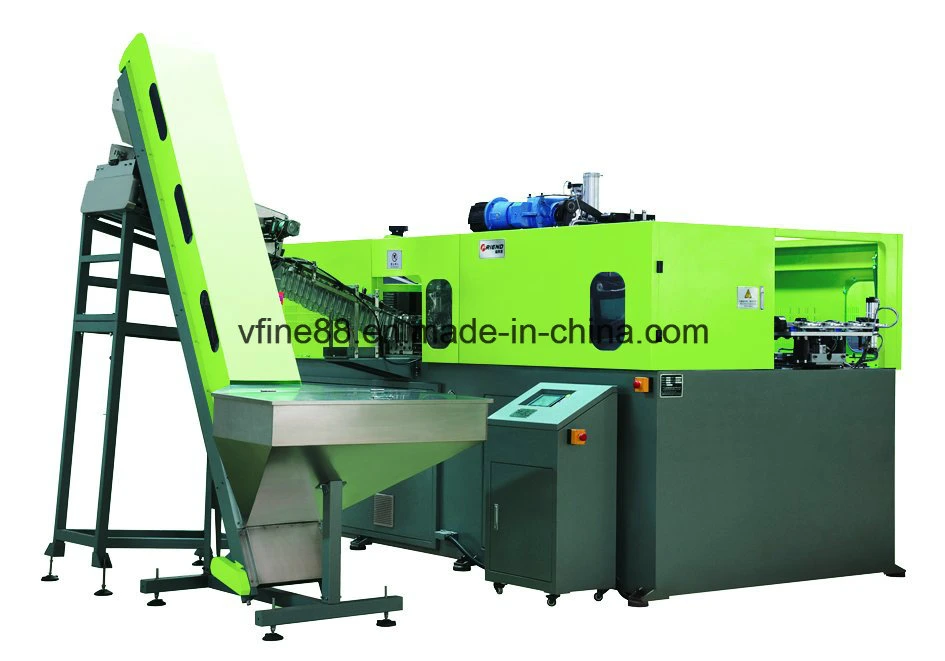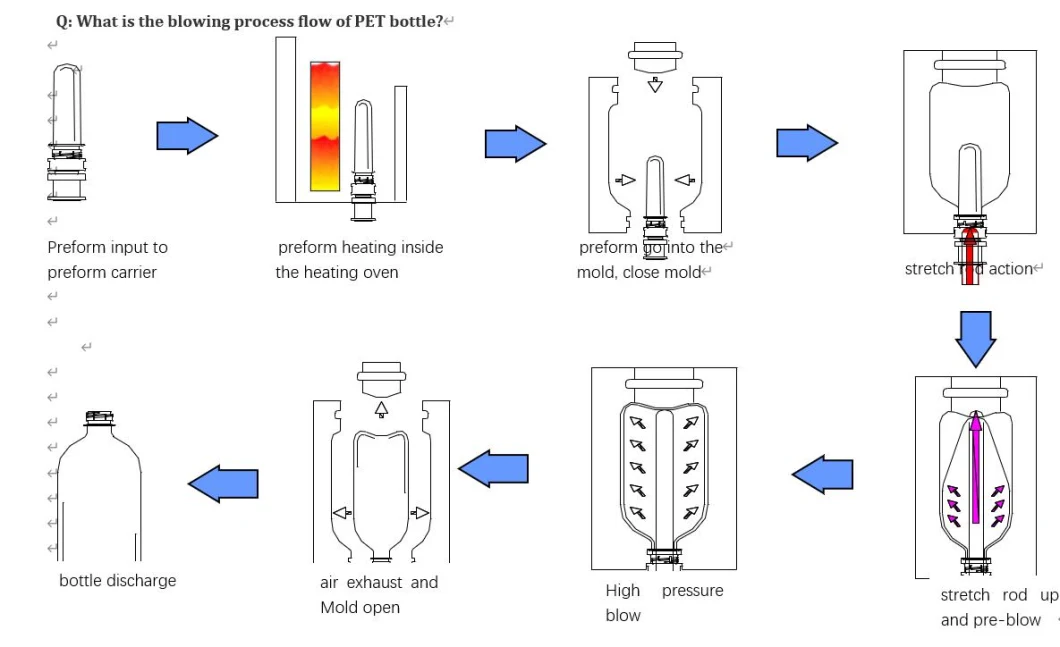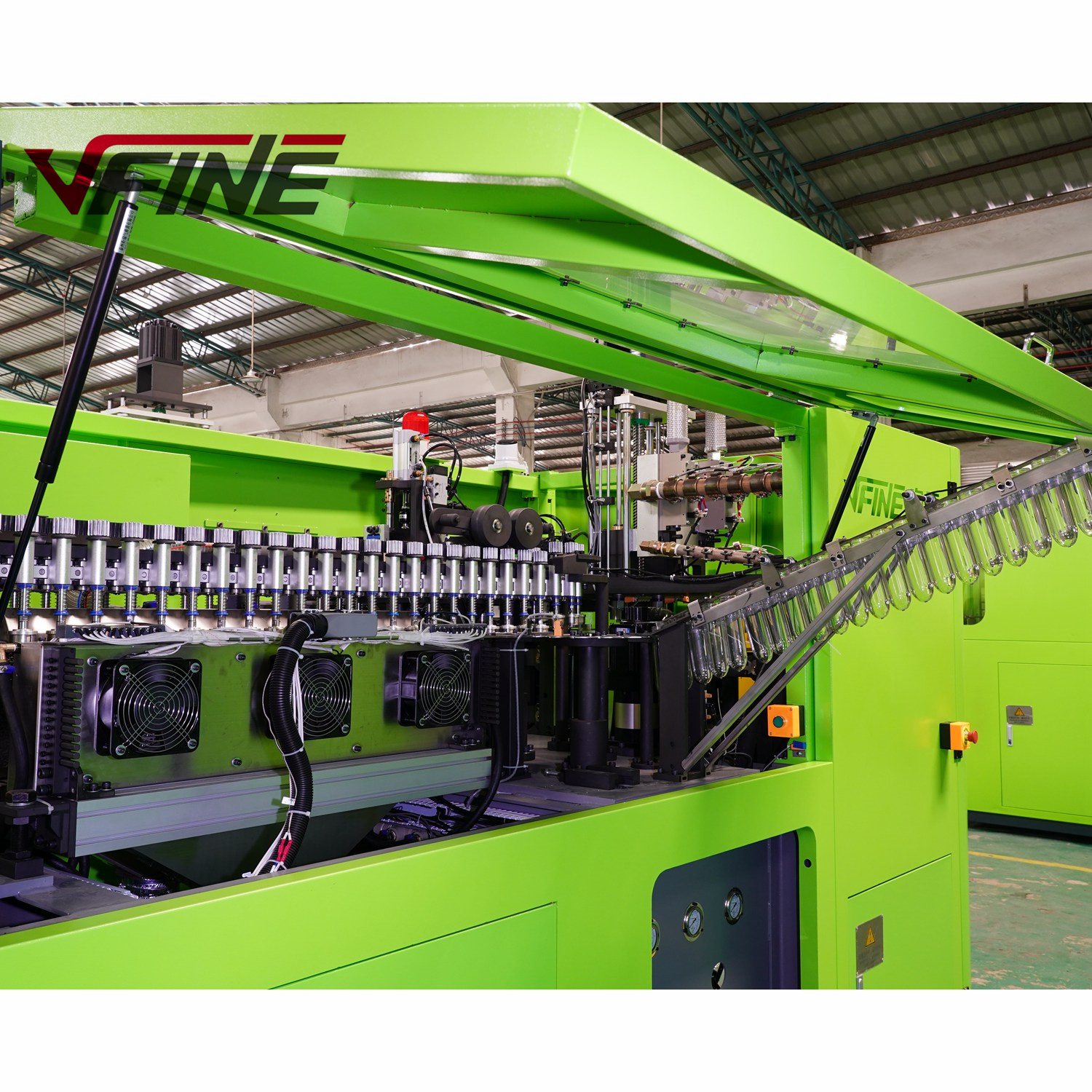What Is The Extrusion Blow Moulding Machine?
Plastic bottles are found everywhere in kitchens, bathrooms and stores. But have you ever thought of what kind of machine they are made of? The answer is simple: blow moulding machines. But not just any machine. For thick-walled, oddly shaped bottles, you need something powerful and flexible.
That is where HDPE, PP, and PETG blow moulding machines enter, also known as extrusion blow moulding machines. This guide will take you through what they are, how they operate and why they could be the ideal solution to your business. Read on to learn more.
What is an Extrusion Blow Moulding Machine?
Hollow plastic bottles are made with the help of extrusion blow molding machine. It heats plastic into a tube (known as a parison) the bottle cavity catch the tube, and then blows air into it, shaping it inside a mold.
This method is ideal for bottles that:
● Have thicker walls
● Come in odd shapes
● Are made with HDPE, PP, or PETG
● The bottle is required to withstand temperatures exceeding 100°C
It’s simple, and great for making strong, high-quality containers in large quantities.

Types of Blow Moulding Machines
These machines aren’t one-trick ponies. They serve different industries and product types. Here’s how each material plays a role:
◆1. HDPE Blow Moulding Machine
HDPE (High-Density Polyethylene) is strong, light, and widely used. HDPE machines are great for making:
● Shampoo and detergent bottles
● Motor oil containers
● Milk jugs
● Household chemical bottles
● Sauce, vinegar
When you require strong and leak-resistant bottles that could withstand some falls, it is an ideal option.
◆2. PP Blow Moulding Machine:
PP (Polypropylene) is flexible and resistant to heat. This machine is often used for:
● Pharmaceutical containers
● Baby bottles
● Microwave-safe packaging
When your product requires a bottle that can withstand high temperatures or needs to be food-safe, then PP is a suitable choice.
◆3. PETG Blow Moulding Machine:
PETG (Polyethylene Terephthalate Glycol) is a clear, glossy plastic often seen in:
● Cosmetic packaging
● Medical packaging
It’s perfect when looks matter and your bottle needs to stand out on a store shelf.
Key Components and Functions
So, let us assume the key components of the machine and their functions:
● Extruder: This is the place where plastic pellets are inserted. It warms up and melts the material.
● Screw: It forces the molten plastic within the extruder.
● Die Head: Shapes the plastic into a tube (parison).
● Mold: The metal shell in which the bottle acquires the final shape.
● Air System: It blows air that forces the plastic to expand in the mold.
● Cooling System: Assists in quickening the hardening of plastic.
● Trimming/Deflashing Unit: Removes excess plastic around the edges.
● Discharge Unit: Releases the finished bottle safely.
These parts work together like clockwork all for one job: making bottles that are ready to fill and ship.
Production Workflow of the Extrusion Bottle Blow Moulding Machine
This is the step-by-step procedure of how these machines make a bottle:
✔1. Material loading and mixing: The material will be loaded in to the machine,
✔2. Material Melting: Plastic pellets (HDPE, PP, and PETG) are fed into the extruder, where a heated screw melts them into a thick, viscous form.
✔3. Extrusion: The hot, melted plastic is pushed downward through the die head into a tube shape (parison).
✔4. Mold Clamping: The mold closes tightly around the parison, sealing both ends.
✔5. Air Blowing: Pressurized air is blown inside the tube, pushing the soft plastic against the mold's walls to form the bottle.
✔6. Cooling and Solidification: The bottle is cooled quickly to hold its shape.
✔7. Auto Deflashing: Excess plastic (flash) is trimmed off automatically and discarded.
✔8. Bottle Discharge: The final product is taken out from the mold, ready to go!
Note: It all takes just a few seconds per bottle: fast, precise, and clean!

Advantages of Using an Blow Moulding Machine
Why go with this type of machine? Here are the big wins:
● Works for Many Bottle Types: You can make big, small, round, or square bottles.
● Tough and Long-Lasting: Perfect for strong bottles like oil or cleaner containers.
● Saves Money on Materials: HDPE and PP are less expensive and simple to work with.
● Quick Production: Produces numerous bottles in a short time to keep you out of time.
● Eco-Friendly Options: Supports use of recycled materials.
If you're looking for a machine that gives you power, precision, and profits, this is it.
Choosing the Right Blow Moulding Machine
Choosing the appropriate blow molding machine may make or break your production line. So before purchasing, here’s what to consider:
▶Desired Output Capacity (BPH)
What is your requirement in BPH? 300 BPH may suit a small workshop, but 2,000 or more may be the target of larger factories. Think about your current demand and future growth. It's better to choose a machine that can grow with you, rather than replacing it too soon.
▶Bottle Size and Design Complexity:
Are you making small, simple bottles? Or larger ones with handles, curves, or custom shapes?
Some machines handle basic designs just fine. Others are made for complex bottles with extra detailing. Match the machine’s molding ability to your product design.
▶Automation Level (Semi-Auto vs. Fully Auto)
Would you prefer a machine that does everything or one that requires assistance? Fully automatic machines are quick, labor-saving and best suited to large operations. Semi-automatic machines require someone to load or unload but they are less expensive and within the capacity of smaller businesses. Select the option that best suits your team and workflow.
▶Energy Consumption and Space Availability:
Energy bills can add up fast. Look for machines with energy-saving systems that won’t drain your power.
Also, check your available floor space. There are large and bulky machines, as well as smaller machines that can be easily fitted into small spaces.
▶Maintenance Support and Machine Lifespan:
Let’s be honest all machines need care. But great machines come with great support.
Ask:
● Is it easy to get spare parts?
● Does the vendor offer training and fast troubleshooting?
● How long is the expected lifespan?
The longer the machine lasts and the less downtime you face, the better your return on investment.

VFINE Machinery’s Blow Moulding Solutions and References
When it comes to quality machines and reliable support, VFINE Machinery is a trusted name in the game. With over 20 years of experience, we have helped businesses in more than 50 countries grow with confidence.
Here’s what VFINE offers:
● Custom machines for HDPE, PP, and PETG
● Full-service support for bottle-making, filling, and packaging
● Professional guidance for installation, training, and troubleshooting
And our machines? Already working smoothly in factories that make products for home care, food, cosmetics, and pharma.
Conclusion
So, what is an HDPE/PP/PETG blow moulding machine? It’s your ticket to strong, professional-quality plastic bottles made quickly, easily, and with great results every time. The extrusion blow moulding process turns simple plastic into powerful packaging and choosing the right machine can set your business up for long-term success. Know your needs. Ask the right questions. And when in doubt, choose a partner like VFINE Machinery, a team that builds not just machines, but trust.












